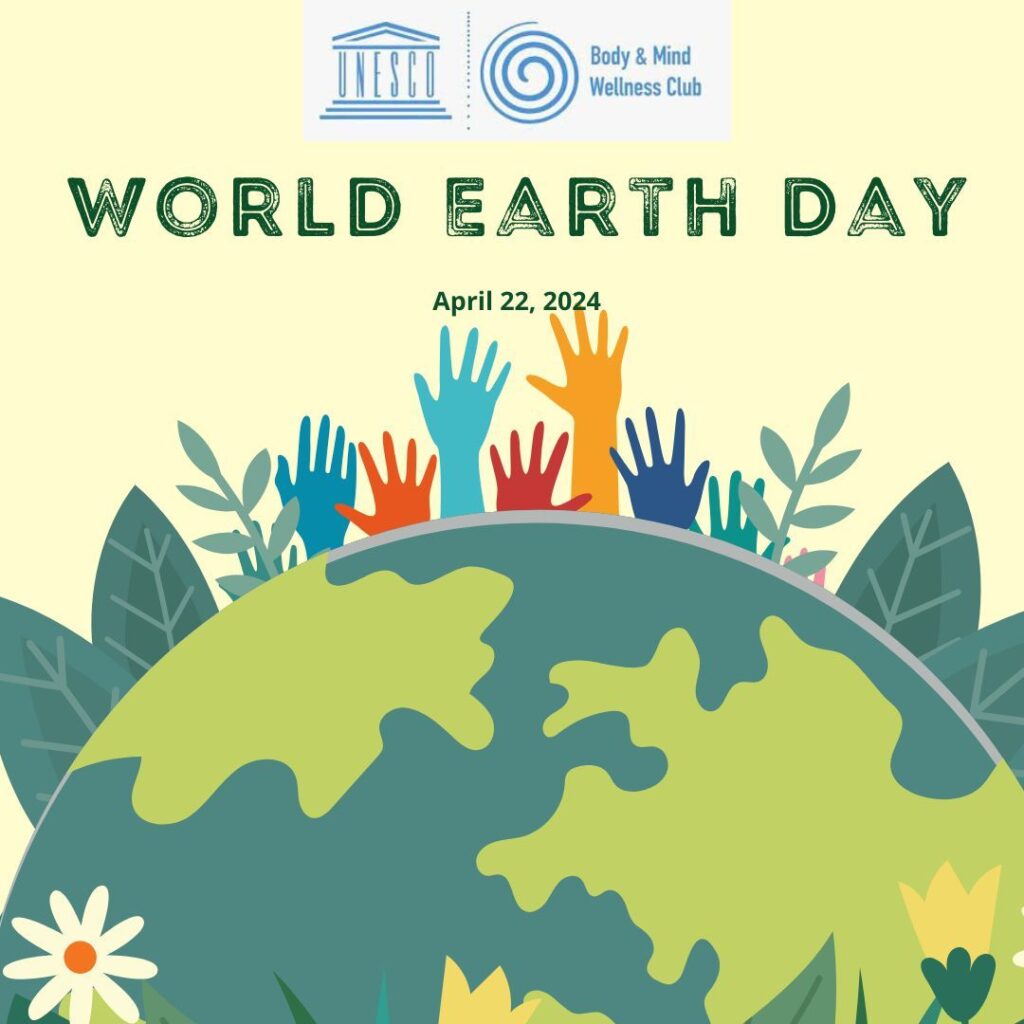
Celebrating Our Mother Earth
What Is Earth Day?
Celebrated on April 22nd every year, International Mother Earth Day provides an opportunity to raise global public awareness of the challenges to the well-being of the planet and all the life it supports. The Day also recognizes a collective responsibility, as called for in the 1992 Rio Declaration, to promote harmony with nature and the Earth, to achieve a just balance among the economic, social and environmental needs of the present and future generations of humanity (United Nations).
History
The history of global environmental protection can be traced back to the 1970s, when environmental issues were not a priority for national political agendas. However, the United Nations Conference on the Human Environment in Stockholm in 1972 marked the beginning of global awareness of the interdependence between people, other species, and the planet, leading to the establishment of World Environment Day and the UN Environment Programme. Since then, global efforts to conserve the environment have grown exponentially, with major conferences such as the Rio de Janeiro Earth Summit, Johannesburg Summit, Rio+20, Climate Action Summit, and COP25 focusing on achieving sustainable development and the Paris Agreement. The United Nations celebrates this ongoing effort through the Harmony with Nature initiative, which hosts an annual interactive dialogue on International Mother Earth Day to promote a holistic approach to harmony with nature and exchange national experiences on measuring sustainable development.
Message
As we look towards a new year dedicated to our Mother Earth, let’s reflect on the UN Secretary-General’s message in 2023.
On International Mother Earth Day, we reflect on humanity’s most important relationship — our relationship with the natural world.
From the air we breathe to the water we drink to the soil that grows our food – humanity’s health depends on the health of Mother Earth.
Yet we seem hellbent on destruction.
Our actions are laying waste to forests, jungles, farmland, wetlands, oceans, coral reefs, rivers, seas, and lakes.
Biodiversity is collapsing as one million species teeter on the brink of extinction.
We must end these relentless and senseless wars on nature.
We have the tools, the knowledge, and the solutions. But we must pick up the pace.
We need accelerated climate action with deeper, faster emissions cuts to limit global temperature rise to 1.5 degree Celsius. We also need massively scaled-up investments in adaptation and resilience, particularly for the most vulnerable countries and communities who have done the least to cause the crisis.
Healthy ecosystems — from oceans and rivers to forests and prairies — are also critical in our fight against climate change. Let’s get to work to implement the historic UN biodiversity agreement to ensure that 30 percent of Earth’s land and water is protected by 2030.
At every step, governments must lead the way. But corporations, institutions and civil society also have a vital role.
Finally, we must learn from the time-won wisdom, knowledge and leadership of Indigenous Peoples, whose environmental stewardship stretches back millennia, and who hold many of the solutions to the world’s climate and biodiversity crises.
This Earth Day, I urge people everywhere to raise their voices – in your schools, workplaces and faith communities, and on social media platforms – and demand leaders make peace with nature.
Let us all do our part to protect our common home for the sake of people and the planet right now, and for the generations to come (United Nations).
Resources
If you would like to learn more and contribute your time to helping our environment, head to these sites below!
- Harmony with Nature
- UN Climate Action
- UN Climate Change
- UN Environment programme
- Convention on Biological Diversity
- Convention to Combat Desertification
- FAO
- UNESCO
- WHO – Biodiversity and health
UNESCO BMW’s Involvement
The UNESCO Body Mind and Wellness Club (BMW) has been actively engaged in promoting physical and mental well-being through its holistic approach to wellness practices. With a diverse range of activities and initiatives, the club has played a pivotal role in fostering a culture of health and harmony within the UNESCO community and beyond. Through workshops, classes, cultural exchanges, and sustainability initiatives, BMW has consistently contributed to the personal growth and overall wellness of its members. This involvement extends to community outreach programs that reach underserved populations, emphasizing inclusivity and the global mission of UNESCO. As a vital component of UNESCO’s commitment to peace, education, and cultural exchange, the BMW Club’s active participation aligns with the organization’s objectives, creating a more balanced and harmonious world.
UNESCO BMW’s Vision
The vision of the UNESCO Body Mind and Wellness Club is rooted in the profound belief that holistic well-being transcends cultural boundaries and is integral to promoting peace and understanding in our interconnected world. Their vision is to create a nurturing and inclusive environment that embraces the rich tapestry of global cultures, where individuals from all walks of life can come together to explore diverse body-mind practices. By fostering an atmosphere of cross-cultural learning and sharing, the club aims to empower its members to lead healthier, more balanced lives while promoting the principles of unity, cultural diversity, and sustainability that lie at the heart of UNESCO’s mission. In alignment with UNESCO’s broader goals, the club envisions a future where wellness becomes an essential part of individual and collective growth, contributing to a harmonious and healthier world.
By: Advait Guje
Sources:
https://www.un.org/en/observances/earth-day/message
https://unescobmw.org/event/unesco-bmw-youth-for-climate-action/